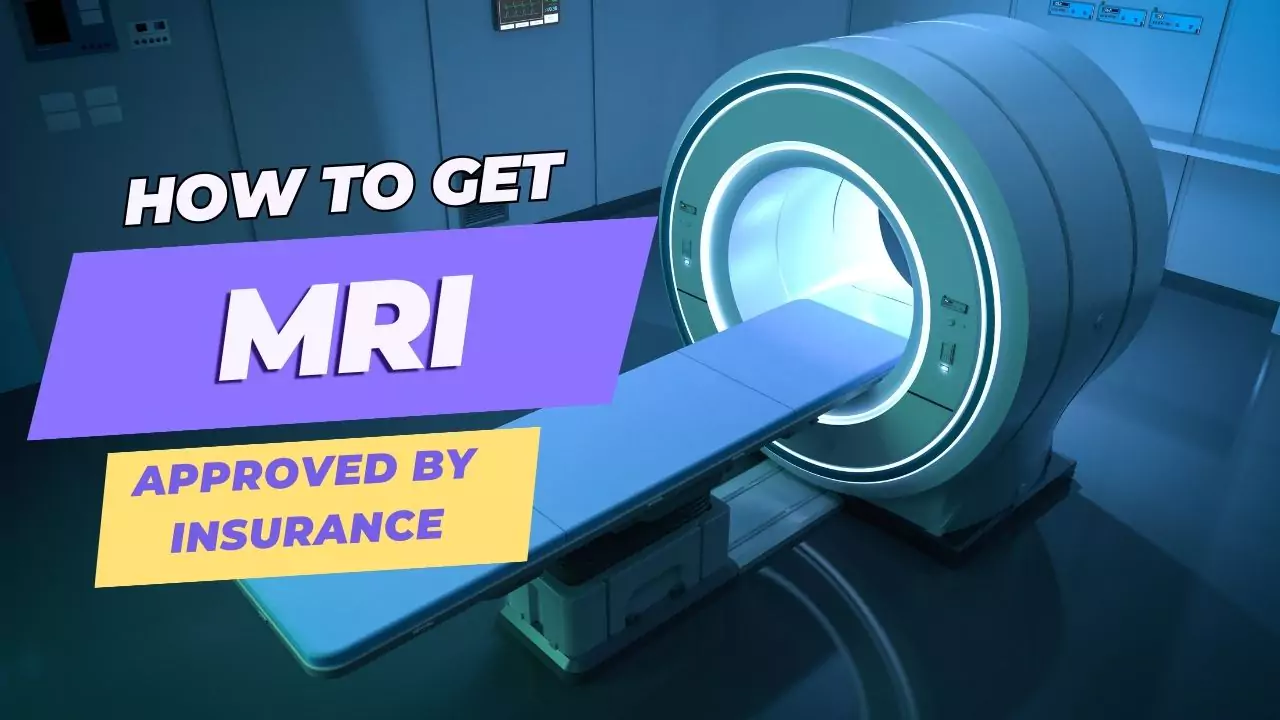Magnetic resonance imaging (MRI) is a medical scan that generates precise images of internal body areas for diagnostic purposes. While useful, MRIs can be costly and may not always receive insurance coverage.
This article aims to explain the steps involved in obtaining insurance approval for an MRI and explore the variables that could influence the approval process.
Understanding Your Insurance Coverage for MRI
What is an MRI?
MRIs produce 3D pictures of organs, tissues, bones, and blood arteries using magnets and radio waves. It can identify cancers, infections, traumas, strokes, and more. MRIs are painless and noninvasive, however, some individuals feel claustrophobic or require sedation. A contrast-enhanced MRI may be done with or without it.
Types of insurance plans for MRI Coverage
Different types of insurance plans may have different rules and benefits for MRI coverage. Common plans include:
- Health maintenance organization (HMO) plans: These plans need a PCP reference and in-network MRI providers. No deductible, but a charge or coinsurance for the scan.
- Preferred provider organization (PPO) plans: These plans let you pick any MRI provider, but out-of-network providers cost extra. You may require a PCP recommendation or insurance pre-authorization. Scan deductibles, copays, and coinsurance may apply.
- High-deductible health plans (HDHPs): These plans cost less but have larger deductibles. After meeting your deductible, you may have coinsurance for MRIs. Scans may need a referral or pre-authorization.
- Medicare: This government health insurance program covers seniors, the handicapped, and those with specific illnesses. Medicare Part B covers medically essential outpatient MRIs ordered by a Medicare-accepting doctor. The scan and doctor’s services cost 20% of Medicare’s allowed price, plus any deductibles.
- Medicaid: A cooperative federal-state health insurance program for low-income and resource-limited persons. State-specific Medicaid coverage for MRIs needs prior permission and medical necessity. Scan cost-sharing may be minimal.
Coverage limitations and out-of-pocket costs
Even if your insurance covers MRIs, there may be restrictions.
- Your plan may only cover specific MRIs or body areas.
- Your plan may only cover MRIs at particular facilities or providers.
- Your plan may restrict your annual or lifetime MRIs.
- Experimental MRIs may not be covered by your plan.
- Your plan may not cover screening or preventative MRIs.
MRI out-of-pocket expenditures may include:
- Deductibles: The amount you pay before your insurance covers covered treatments.
- Copays: A set fee for covered services.
- Coinsurance: After satisfying your deductible, coinsurance is a portion of a covered service’s cost.
- Out-of-network costs: This is the difference between what your insurer pays and what the provider charges.
Tips for Getting an MRI Approved by Insurance
To increase your chances of getting an MRI approved by insurance, follow these tips:
1. Consultation with your Doctor
Prior to requesting an MRI, engage in a discussion with your doctor regarding the purpose, insights, impact on treatment, and available alternatives. Ensure that your doctor accurately records the medical necessity and reasoning behind the decision to perform the MRI in your medical files.
2. Medical necessity for the MRI
Medical necessity means that the MRI is appropriate and necessary for your condition based on clinical guidelines and evidence-based standards of care. Your insurance company will review your medical records and prior authorization request to determine if the MRI meets their criteria for medical necessity.
3. Prior Authorization Process and Requirements
Prior authorization is a process where your insurance company or a third-party administrator reviews and approves your MRI request before you get the scan. Prior authorization is not a guarantee of payment, but it can help avoid denials or delays in coverage. To get prior authorization, you or your doctor need to submit a request form with information such as:
- Your name, date of birth, insurance ID number, and contact information
- Your doctor’s name, address, phone number, and NPI number
- The name, address, phone number, and NPI number of the facility or provider where you will get the MRI
- The date and time of the scheduled MRI
- The type and code of the MRI
- The body part and reason for the MRI
- The diagnosis and symptoms related to the MRI
- The treatment plan and goals related to the MRI
- The clinical documentation and evidence supporting the medical necessity of the MRI
You can submit the prior authorization request online, by phone, by fax, or by mail, depending on your insurance company or benefits management company. You should submit the request as soon as possible, preferably at least a week before the scheduled MRI. You should also keep a copy of the request form and any supporting documents for your records.
4. Choosing in-network providers
To save money and avoid unexpected bills, choose an in-network provider for your MRI. An in-network provider is a contracted healthcare professional who offers services at a reduced cost through your insurance company. You can find in-network providers by checking your insurance company’s website, calling their customer service number, or asking your doctor for referrals.
Common Reasons for MRI Denial and Solutions
Sometimes, your insurance company may deny your MRI request for various reasons. Some of the common reasons are:
1. Lack of medical necessity
This means that your insurance company does not agree that the MRI is appropriate or necessary for your condition based on their criteria. To appeal this decision, you need to provide additional documentation and evidence to support the medical necessity of the MRI. You can also ask your doctor to write a letter of medical necessity explaining why the MRI is needed and how it will affect your treatment plan.
2. Non-coverage of the requested MRI
This means that your insurance company does not cover the type or code of the MRI you requested based on your policy terms. To appeal this decision, you need to check your policy documents and see if there are any exceptions or exclusions for the requested MRI. You can also ask your doctor to explain why the requested MRI is more suitable than other covered options.
3. Plan limitations and restrictions
This means that your insurance company has a limit or restriction on how many or how often you can get an MRI based on your policy terms. To appeal this decision, you need to check your policy documents and see if there are any exceptions or waivers for the limit or restriction. You can also ask your doctor to explain why you need more frequent MRIs than what your plan allows.
4. Guidelines for appealing a denied MRI
If your insurance company denies your MRI request, you have the right to appeal their decision. You should follow these steps to appeal:
- Review the denial letter and understand the reason and basis for the denial.
- Contact your insurance company and ask for clarification and instructions on how to file an appeal.
- Gather all relevant documents and evidence to support your appeal, such as medical records, prior authorization request form, letter of medical necessity, clinical guidelines, etc.
- Write a clear and concise appeal letter stating why you disagree with the denial and why you need the MRI. Include your name, date of birth, insurance ID number, contact information, claim number, date of service, type and code of MRI, body part and reason for MRI, diagnosis and symptoms related to MRI, treatment plan, and goals related to MRI, clinical documentation and evidence supporting the medical necessity of MRI, etc.
- Submit your appeal letter along with all supporting documents within the time frame specified by your insurance company. You can submit it online, by phone, by fax, or by mail.
- Follow up with your insurance company regularly until you receive a response. Keep a record of all communication with them.
- If your appeal is denied again, you may have further options such as requesting an external review by an independent third-party reviewer or filing a complaint with your state’s insurance department.
Conclusion
Getting an MRI approved by insurance can be a challenging and frustrating process. However, by understanding your insurance coverage, following the prior authorization process, choosing in-network providers, and appealing any denials if necessary, you can increase your chances of getting an MRI covered by insurance. An MRI can be a valuable tool for diagnosing and treating various conditions, so don’t let insurance barriers stop you from getting the care you need.





